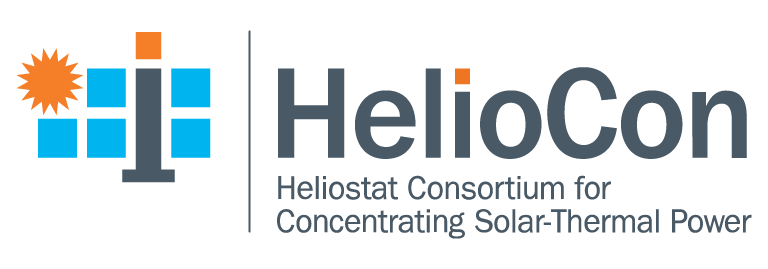
Field Deployment
Lead: Jeremy Sment, SNL jsment@sandia.gov
Co-Lead: Alex Zolan, NREL Alexander.Zolan@nrel.gov
Field deployment costs are greatly affected by the location and the supply chain. Cost reductions can come from learning rates, heliostat design features that facilitate ease of installation, and process improvements. Learning rates are optimal when there is steady policy, cost pressure, and when multiple deployments happen within a single institution. Historically, time gaps between deployments have caused suppliers and technology developers to lose institutional knowledge.
The field deployment subtask may be able to help by improving the barriers to successful project deployment. There is a gap in understanding of overall costs for small modular systems since commercial deployments have historically been reduced LCOE by maximizing the capacity of a single receiver and power block. Stabilizing the supply chain may be aided by reducing investor risk by optimizing systems in the $200-300 million range, reducing utility risk by improvements in power performance predictions, and increasing the variety of types of projects that CSP is eligible for by developing modular systems of approximately 10 MW. There is a gap in understanding of barriers to site selection. Permitting risk can be mitigated by eliminating wildlife impacts and identifying environmental benefits, and by engaging early with communities and allowing shared leadership on deployment matters such as site selection and jobs, preserving institutional knowledge on deployment/manufacturing/assembly processes. Solar layouts are typically optimized for a few times of the year. There is a gap in understanding of multiple or unbounded design points. Flexible field layout algorithms that are sized to operate in a larger variety of solar conditions and therefore deployable in more regions can be developed. Heliostat design for ease of deployment cannot reduce optical quality. Wireless communications and PV power with batteries on each heliostat has been shown to have great benefits in reducing trenching/wiring costs as well as enabling smart calibration features. There is a gap in understanding of the potential reductions in pedestal mass due to inner field wind load reductions. There is also a gap in understanding of wind loads on the inner field and whether full field forced stow during wind events is necessary. There is a potential to use load sensors instead of anemometers to determine stow. Cost reductions related to deployment processes may be possible. There is a gap in the knowledge of how much field deployment processes cost within the full plant or collector budget. It may be less costly and less impactful to the habitat to leave the field in its natural state to the greatest extent possible. Manual cleaning may be less costly than mechanized washing. There is a gap in understanding of how natural vegetation may reduce soiling an erosion within a field. Windload is identified as a cross-cut separate sub-topic under the field deployment and further elaborated here.
Wind load
Lead: Shashank Yellapantula, NREL Shashank.Yellapantula@nrel.gov
Co-Lead: Bo Yang, ASTRI bo.yang01@adelaide.edu.au
Wind loads are a major driver of heliostat cost through the sizing of structural components, tracking accuracy and optical performance of the heliostat field. With respect to the heliostat technology, detailed understanding of the static and dynamic loads of a heliostat design is crucial to reduce conservative manufacturing tolerances and material cost, whilst increasing field efficiency and reliability to reduce risk of component failures due to high-wind events. The development of standardized methods and tools are needed to better estimate wind-dependent heliostat costs and thus reduce risk and conservative heliostat designs.
Gaps in wind load such as site characterization for wind measurements, critical load cases for heliostat design, turbulence impacts on heliostat tracking error, testing of heliostat array configurations, and heliostat field layout and operating strategies, present a significant barrier for new developers and investors with respect to reliability of heliostat designs and confidence in heliostat field performance. The gaps on wind load can only be addressed through complementary wind tunnel and field-based measurements and modelling in collaboration with industry and research groups.
